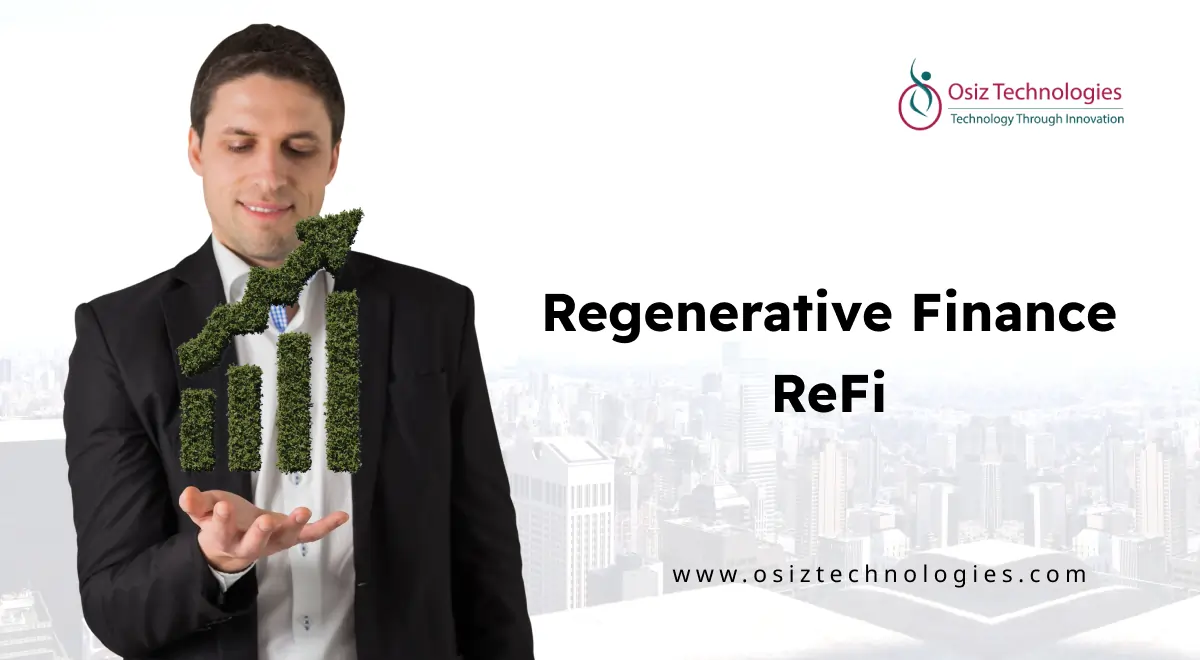Regenerative Finance (ReFi) is a fresh idea for a financial system that supports people and the planet at the same time. Unlike old-fashioned finance, ReFi focuses on sustainability, fairness, and lasting value. By using blockchain and Web3, ReFi builds financial tools that give back.
What is ReFi? Why the Future of Finance Is Regenerative
Regenerative Finance (ReFi) is a new approach to finance that focuses on supporting ecological, social, and economic well-being, not just profits. It creates funding methods for environmental projects, promotes fairness, and builds stronger communities.
Traditional finance sometimes takes value without thinking about future results, while ReFi tries to make good things happen for people and Earth. By mixing good principles with blockchain and Web3 tech, ReFi makes systems that are open, responsible, and focused. As problems all over the world like weather change and unfairness get worse, ReFi gives us a plan for a fairer and lasting money future.
DeFi to ReFi: The Evolution of Purpose-Driven Protocols
Decentralized Finance (DeFi) has made financial tools more open and accessible. But so far, DeFi has mostly centered on making money and having available funds, not on helping the environment or people. That’s where ReFi comes in. ReFi isn't trying to beat DeFi. It's about changing what we value. ReFi uses the same base as DeFi but focuses on a healthy environment, rebuilding communities, and lasting sustainability. These new economic systems use blockchain to reward people for restoring nature and helping communities thrive.
Core Principles of ReFi
Regeneration Over Extraction
ReFi is about fixing and helping ecosystems last, not just taking resources for quick money. It pushes for money plans that give back more than they use. This way, growth helps both nature and people, not just earnings.
Transparency and Trust
ReFi uses blockchain to show how money moves and how it affects the environment. This openness helps people trust each other and keeps projects responsible. It lets everyone make smart choices with data that's up-to-date and can't be changed.
Community-Led Economies
Regenerative Finance (Refi) backs plans where locals own and decide what happens. Using DAOs and other tools, they can control how money is used and shared. This makes economies stronger and based on what everyone values.
Tokenized Carbon Credits
ReFi uses blockchain to turn carbon credits into digital tokens, making them easier to follow, check, and trade around the world. This fast system makes climate finance more reliable and quick. It lets people and groups clearly help balance out carbon use.
ReFi in Action: Case Studies
KlimaDAO
ReFi projects like KlimaDAO works to make carbon markets better. They put carbon credits on the blockchain to make carbon offset programs more liquid and reliable. Their setup uses decentralized finance to encourage people to act on climate change.
Toucan Protocol
Toucan Protocol links regular carbon markets with blockchain. They let verified carbon credits be put on-chain, which allows for carbon trading that is decentralized. This makes it simpler to fund climate projects and makes things more open.
Regen Network
Regen Network is all about rewarding real ecological improvements with claims that are verified and backed by data. They keep track of land restoration and regenerative ways of doing things using things like satellite images and blockchain. By partnering with farmers, they link money to natural regeneration.
Blockchain and Web3’s Role in Powering ReFi
Blockchain technology is key to improve ReFi blockchain sustainability, practices, giving us the base we need for clear, verifiable, and traceable impact finance. Unlike DeFi, which is all about open financial systems, ReFi is a move toward Web3 finance that aims to support ecological and social results. Smart contracts take care of climate-related finance things automatically and make sure payouts happen on time and based on impact. DAOs build clear, community-run governance that fits with the main values of regenerative economic rules. By tokenizing things like forest conservation or tokenized carbon credits, environmental assets become easy to trade, opening up new money streams. This setup makes sure regenerative results can be measured, grown, and last.
Building and Funding in the ReFi Space
Recently, ReFi has inspired fresh ways to fund projects, drawing in investors, charities, and DAOs. Money is going into ReFi projects like KlimaDAO, Toucan Protocol, and similar groups that mix possible profits with positive change.
New business owners in ReFi are using:
- Protocols for regenerative economics to get everyone on the same page.
- Impact DAOs to build capital structures that match community goals.
- Tools that tokenize impact measurement to show funders clear results.
As more funds go to mission-focused businesses, the ReFi field keeps growing in different locations and industries.
Why ReFi Is the Future of Regenerative Finance and Impact Investing?
ReFi's vision goes far beyond carbon credits and green investing. Its true goal is to create a regenerative economy—one that thrives by restoring rather than depleting. This shift redefines value by incorporating metrics like preserved biodiversity, resilient communities, and sequestered carbon.
As purpose-driven Web3 finance gains momentum, ReFi stands at the forefront, bridging ecological health with next-gen financial innovation. By embedding regeneration into the core of its systems, ReFi lays the foundation for an economy that values both environmental sustainability and economic growth.
For any DeFi Development Company aiming to lead the charge in innovation, integrating regenerative finance principles into blockchain solutions isn’t just forward-thinking—it’s essential. ReFi presents a transformative model where the planet’s well-being is as critical as profits, signaling the future of ethical and impactful finance.
Listen To The Article
Recent Blogs

X-Mas 30%
Offer











